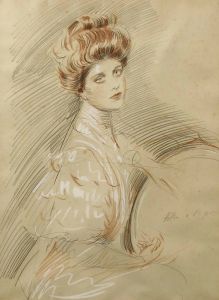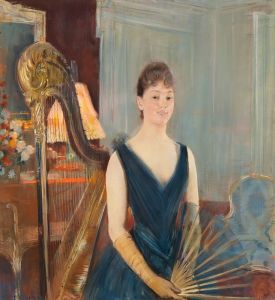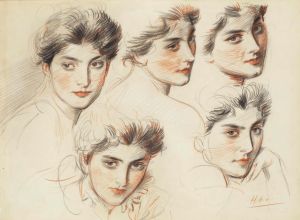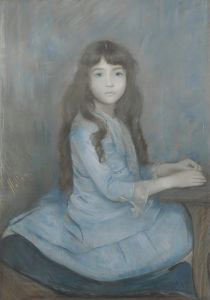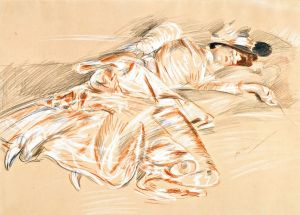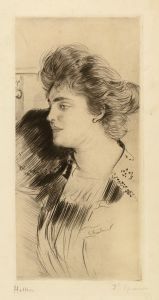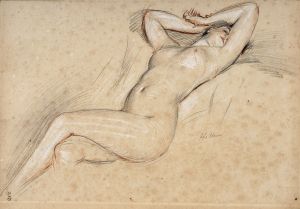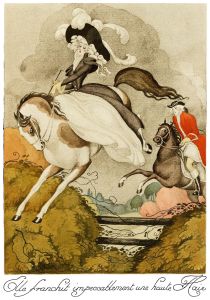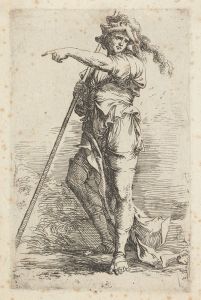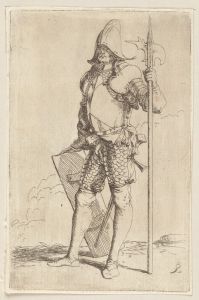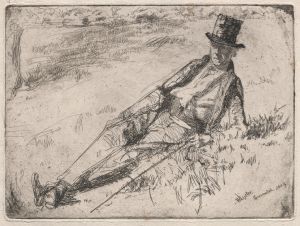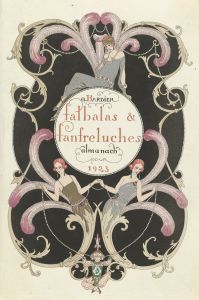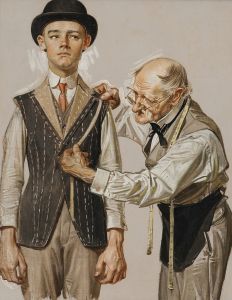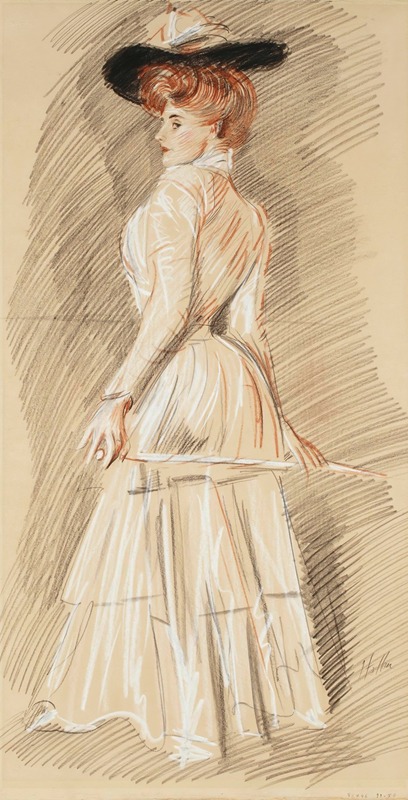
Elégante à la canne
A hand-painted replica of Paul César Helleu’s masterpiece Elégante à la canne, meticulously crafted by professional artists to capture the true essence of the original. Each piece is created with museum-quality canvas and rare mineral pigments, carefully painted by experienced artists with delicate brushstrokes and rich, layered colors to perfectly recreate the texture of the original artwork. Unlike machine-printed reproductions, this hand-painted version brings the painting to life, infused with the artist’s emotions and skill in every stroke. Whether for personal collection or home decoration, it instantly elevates the artistic atmosphere of any space.
Paul César Helleu was a French artist renowned for his portraits of beautiful society women, capturing the elegance and fashion of the Belle Époque era. One of his notable works is "Elégante à la canne," which exemplifies his skill in portraying the grace and sophistication of his subjects.
Helleu was born on December 17, 1859, in Vannes, France. He studied at the École des Beaux-Arts in Paris, where he was influenced by the Impressionists, particularly John Singer Sargent and James Abbott McNeill Whistler. Helleu developed a distinctive style characterized by his use of drypoint, a printmaking technique that allowed him to create delicate lines and subtle textures. This technique became one of his trademarks, and he was highly regarded for his ability to capture the nuances of fashion and the personalities of his sitters.
"Elégante à la canne" is a testament to Helleu's mastery of drypoint and his keen eye for detail. The artwork depicts a fashionable woman, elegantly dressed and holding a cane, which was a popular accessory among the upper classes during the late 19th and early 20th centuries. The woman's attire and posture reflect the societal norms and aesthetic values of the time, emphasizing grace, poise, and refinement.
Helleu's portraits often featured women from high society, including notable figures such as Consuelo Vanderbilt and Belle da Costa Greene. His ability to capture the essence of his subjects made him a sought-after portraitist among the elite. "Elégante à la canne" is no exception, as it showcases his talent for rendering the intricate details of clothing and accessories, as well as the subtle expressions of his sitters.
The composition of "Elégante à la canne" is marked by its simplicity and elegance. Helleu's use of line is both fluid and precise, creating a sense of movement and life within the portrait. The woman's gaze is directed away from the viewer, adding an air of mystery and introspection to the piece. This characteristic is common in Helleu's work, as he often portrayed his subjects in moments of quiet contemplation.
Helleu's work, including "Elégante à la canne," is celebrated for its contribution to the art of portraiture during the Belle Époque. His ability to capture the spirit of the era and the individuality of his subjects has left a lasting impact on the art world. Today, his works are held in high regard and can be found in various museums and private collections around the world.
In summary, "Elégante à la canne" by Paul César Helleu is a quintessential example of the artist's skill in drypoint and his ability to portray the elegance and sophistication of the Belle Époque. Through his delicate line work and attention to detail, Helleu immortalized the fashion and demeanor of his time, making his portraits timeless representations of an era defined by its refinement and grace.





